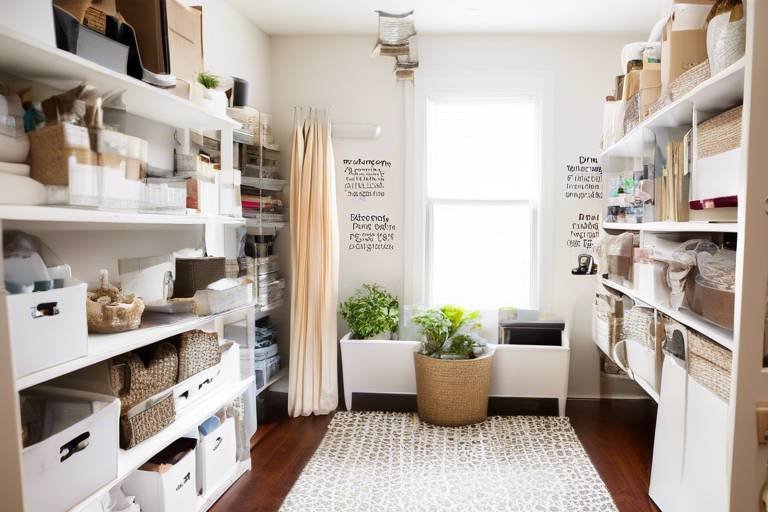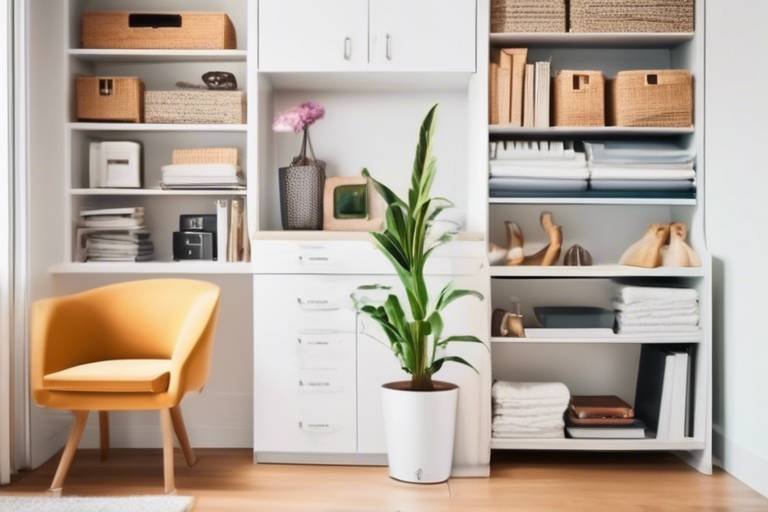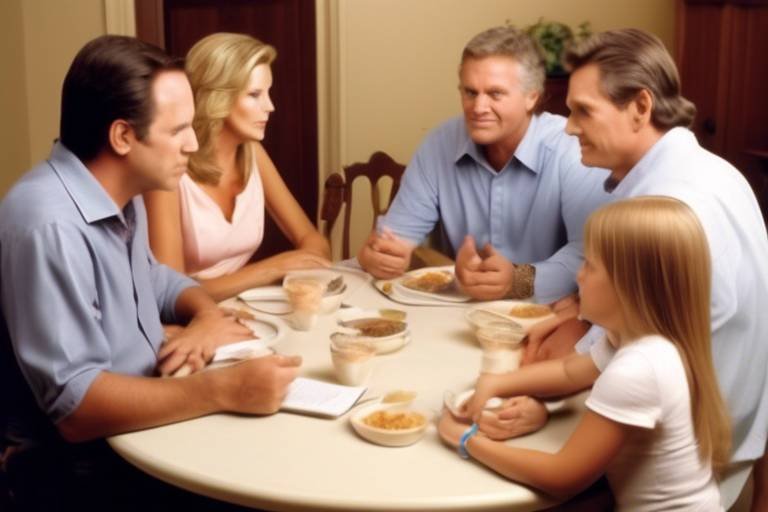Guide to Creating a Family-Friendly Backyard
Creating a backyard that is not just a patch of grass, but a vibrant, family-friendly oasis can be one of the most rewarding projects you undertake. Imagine a place where laughter echoes, where children can run free, and where family gatherings become cherished memories. This article will explore essential elements for designing a backyard that caters to all family members, providing safety, fun, and relaxation while enhancing outdoor living experiences. Whether you have a sprawling yard or a cozy patio, the right design can transform your outdoor space into a haven for everyone.
Selecting an appropriate area for your backyard is crucial. Think of your backyard as a canvas; the size, accessibility, and proximity to the home will determine how you paint your masterpiece. Are there enough square feet for a playground? Is it an easy stroll from the kitchen to serve snacks? These questions are vital. A welcoming environment for family activities can be achieved by ensuring that the space is accessible and inviting. If you have a small yard, consider vertical gardening or multi-functional furniture to maximize your space!
Ensuring a safe backyard is paramount for families with children and pets. After all, what good is a fun space if it comes with risks? Implementing safety measures like soft landscaping, secure fencing, and proper storage of tools and chemicals is essential to prevent accidents. Think of your backyard as a playground; it should be designed with care and thoughtfulness. This means no sharp edges, slippery surfaces, or hidden hazards lurking in the bushes.
Incorporating soft landscaping elements like grass, shrubs, and flowers can create a gentle play area. Imagine a lush green carpet where your kids can tumble and roll without a care in the world! Choose non-toxic plants and materials to ensure the safety of children and pets alike. It’s like creating a natural cushion for your little ones. When selecting plants, consider options such as:
- Lavender - A beautiful addition that’s safe for pets.
- Sunflowers - Bright and cheerful, perfect for sunny spots.
- Marigolds - Not only lovely but also deter pests!
When selecting plants that are safe for children and pets, research is key. You wouldn’t want your little explorer to nibble on something harmful, right? Opt for non-toxic varieties to prevent any health risks while enhancing the beauty of your backyard. It’s like choosing the right ingredients for a family meal; you want the best for your loved ones!
Designate specific areas within your yard for play, such as a sandbox or a grassy area for games. Think of these zones as the playgrounds of your backyard. By organizing the space, you encourage outdoor activity and help keep the chaos at bay. A well-defined play zone not only keeps things tidy but also allows kids to know where their adventures begin!
A sturdy fence is crucial for keeping children and pets safe within the backyard. It’s like a protective hug around your outdoor space. Explore various fencing options that provide security while complementing your overall landscape design. From wooden panels to decorative metal, the right fence can enhance your yard's aesthetic while ensuring peace of mind.
Adding engaging elements like play structures, water features, or outdoor games can enhance the backyard experience. Picture this: a slide that spirals into a soft landing, or a miniature fountain that glistens in the sun. These features encourage family bonding and outdoor playtime, creating lasting memories that will be cherished for years to come.
Investing in durable play structures can provide hours of entertainment for children. Look for age-appropriate options that promote physical activity and imaginative play while ensuring safety. A well-placed swing set or climbing frame can transform your yard into a mini amusement park, where the only limit is their imagination!
Incorporating outdoor games like badminton, cornhole, or a mini-golf setup can make your backyard a hub of family fun. These activities foster teamwork and friendly competition among family members. Imagine hosting a weekend tournament where the whole family participates, cheering each other on. It’s not just about the games; it’s about the connections you build and the memories you create together.
Q: What are the best plants for a family-friendly backyard?
A: Look for non-toxic plants like lavender, sunflowers, and marigolds that are safe for children and pets.
Q: How can I ensure my backyard is safe for kids?
A: Implement soft landscaping, secure fencing, and store tools and chemicals safely out of reach.
Q: What fun features can I add to my backyard?
A: Consider play structures, water features, and outdoor games to enhance family bonding and fun.

Choosing the Right Space
Choosing the right space for your backyard is like setting the stage for a grand performance; it’s crucial for ensuring that every act, every moment, is a hit! Imagine your backyard as a blank canvas, waiting for you to paint it with laughter, joy, and unforgettable family memories. Before diving into design and decor, take a moment to consider a few key factors that will influence your backyard's overall atmosphere and functionality.
First and foremost, think about the size of your yard. Is it a sprawling expanse or a cozy nook? A larger space offers the freedom to incorporate various features, such as play areas, gardens, and relaxation zones. However, a smaller yard can still be transformed into a family-friendly haven with clever design choices. Remember, it’s not about the size; it’s about how you utilize the space you have!
Next, accessibility plays a pivotal role in your backyard's usability. Consider how easy it is for family members, especially children and elderly relatives, to navigate the area. Smooth pathways, ramps, or even a simple layout can make a world of difference. You want everyone to feel welcome and comfortable, whether they're running around or just lounging in the sun.
Additionally, the proximity to your home is essential. A backyard that is conveniently located near your living space encourages spontaneous outdoor activities. Imagine stepping out of your kitchen to see your kids playing safely in the yard or enjoying a cozy evening by the fire pit just a few steps away from your living room. This closeness not only makes it easier to supervise children but also fosters a sense of togetherness that is hard to replicate.
As you evaluate these factors, it might be helpful to create a simple table to visualize your options:
| Factor | Considerations |
|---|---|
| Size | Evaluate how much space you have and how it can be utilized effectively. |
| Accessibility | Ensure pathways are clear and easy for all family members to navigate. |
| Proximity to Home | Consider how close the backyard is to the main living areas for convenience. |
Finally, envision the activities that will take place in your backyard. Will it be a vibrant play area for children, a serene garden retreat for adults, or a lively space for family gatherings? By keeping these activities in mind, you can better determine how to design your backyard to accommodate everyone’s needs. Remember, a well-thought-out space can turn any backyard into a family-friendly paradise where everyone can thrive!

Safety First
Ensuring a safe backyard is paramount for families with children and pets. Think of your backyard as a sanctuary—a place where laughter echoes and memories are made. However, without the right safety measures in place, this sanctuary can quickly turn into a place of worry. To create a space where you can relax without constantly keeping an eye on your little ones, it’s essential to implement a variety of safety features. Start with soft landscaping that cushions falls and an organized play area that minimizes risks.
One of the first steps in achieving safety is to incorporate soft landscaping options. This means using materials that are gentle on the body. For instance, a lush green lawn can serve as a perfect play area, reducing the impact of any accidental tumbles. Additionally, consider planting soft shrubs and colorful flowers that not only beautify your space but also add a layer of safety. When choosing plants, it’s crucial to go for non-toxic varieties. You wouldn’t want a curious toddler or a playful puppy munching on something harmful, right? Here’s a quick table to help you identify some safe options:
| Plant Name | Type | Non-Toxic? |
|---|---|---|
| Sunflower | Flower | Yes |
| Marigold | Flower | Yes |
| Spider Plant | Houseplant | Yes |
| Boston Fern | Houseplant | Yes |
| Pansies | Flower | Yes |
Next, let’s talk about secure fencing solutions. A sturdy fence not only keeps your pets and children safe but also provides a boundary that defines your space. When selecting a fence, think about durability as well as aesthetics. You want something that complements your home while ensuring that little ones don’t wander off. Options like wooden fences, vinyl, or even decorative wrought iron can provide both security and style. Make sure the fence is high enough and has no gaps that a curious child or pet could exploit.
Lastly, proper storage of tools and chemicals is vital. Imagine your child discovering a can of paint or a box of gardening tools—yikes! To prevent accidents, invest in a locked shed or cabinet where you can keep all your gardening supplies, tools, and chemicals out of reach. It’s all about creating a space where curiosity can thrive without compromising safety. Remember, a little foresight goes a long way in ensuring that your backyard remains a fun and safe haven for everyone!
- What are some safe materials for a backyard play area?
Soft grass, rubber mulch, and sand are excellent choices for cushioning falls. They create a safe environment for children to play without the risk of serious injury.
- How high should a fence be for safety?
A fence should ideally be at least 4 to 6 feet high to prevent children and pets from climbing over or escaping. Make sure to also check for any gaps at the bottom.
- What plants should I avoid in a family-friendly backyard?
Avoid plants like oleander, foxglove, and certain types of lilies, as they can be toxic to pets and children if ingested.
- How can I keep my tools and chemicals safe?
Store all hazardous materials in a locked shed or cabinet, and consider using child-proof locks for added security.

Soft Landscaping Options
When it comes to creating a family-friendly backyard, soft landscaping plays a pivotal role in crafting a safe and inviting environment. Imagine a lush green carpet of grass where your kids can run freely, or vibrant flower beds that attract butterflies and bees, turning your yard into a natural playground. Choosing the right soft landscaping options not only enhances the aesthetic appeal of your space but also provides a soft landing for playful tumbles and a serene backdrop for family gatherings.
One of the first considerations is the type of grass you want to lay down. Opting for durable and resilient grass varieties like Kentucky bluegrass or fescue can withstand the wear and tear of playful feet. These grasses are not only tough but also provide a lush, green surface that feels great underfoot. To complement the grass, consider incorporating a variety of shrubs and flowers. Not only do they add color and texture, but they can also serve as natural borders for play areas, helping to define spaces without the need for harsh barriers.
When selecting plants, it’s essential to prioritize safety. You wouldn’t want your little ones or furry friends munching on something harmful. Therefore, researching non-toxic plants is a must. For instance, consider adding plants like sunflowers, marigolds, and zinnias, which are not only safe but also easy to maintain. These plants can bring bursts of color throughout the growing season, making your backyard a vibrant haven.
Additionally, creating defined play zones within your soft landscaping can enhance the functionality of your yard. Imagine a cozy corner with a sandbox surrounded by soft grass, or a small patch of artificial turf designed for a mini soccer game. These zones not only encourage outdoor activity but also help keep your backyard organized. By designating specific areas for play, you can ensure that the rest of your garden remains pristine and beautiful.
To further enhance the safety and enjoyment of your backyard, consider adding soft landscaping features like small hills or gentle slopes. These can be created using soil and grass to form a natural play area for rolling or climbing. Just be sure to keep the slopes gentle to avoid any accidents. The key is to create a space that inspires adventure while keeping safety in mind.
In summary, soft landscaping is not just about aesthetics; it’s about creating a nurturing environment where your family can play, relax, and connect with nature. By choosing the right plants, defining play areas, and ensuring safety, you can transform your backyard into a family-friendly paradise that everyone can enjoy.

Choosing Non-Toxic Plants
When it comes to creating a family-friendly backyard, selecting the right plants is more than just an aesthetic choice; it's a matter of safety. You want your outdoor space to be a vibrant haven where your children can play and your pets can roam freely, without the worry of harmful plants lurking in the shadows. That's why is essential. Not only do they beautify your yard, but they also provide peace of mind for parents and pet owners alike.
Start by researching plants that are known to be safe for both children and pets. There are numerous resources available online, including gardening websites and pet safety organizations, that offer comprehensive lists of non-toxic plants. For instance, some popular non-toxic options include:
- Marigolds: Bright and cheerful, these flowers not only add color but also deter pests.
- Sunflowers: These towering beauties are not only safe but also attract birds and beneficial insects.
- Spider plants: Known for their air-purifying qualities, they are also safe for furry friends.
- Boston ferns: A lovely addition to shaded areas, these ferns are non-toxic and add a lush feel to your garden.
In addition to choosing the right plants, consider the layout of your garden. Grouping non-toxic plants together can create a safe zone where kids can play and explore without the fear of encountering harmful species. You might think of it as creating a “safe haven” within your backyard, where children can learn about nature without any risks. Furthermore, using mulch or gravel around these plants can help define the area and keep it tidy.
It's also crucial to educate your family about the plants in your backyard. Make it a fun activity to learn about each plant’s benefits and characteristics. This not only fosters a sense of responsibility but also encourages kids to appreciate nature. You could even create a small garden journal where they can document their observations about growth and changes in the plants. By involving your family in the gardening process, you're not just making your backyard safer; you're also cultivating a love for the outdoors.
Lastly, remember that maintenance is key. Regularly check your plants for any signs of pests or diseases, as these can sometimes lead to the use of harmful chemicals. Opt for organic solutions whenever possible, as they are generally safer for both children and pets. By being proactive in your gardening practices, you ensure that your backyard remains a safe and enjoyable space for everyone.
- What are some easy-to-grow non-toxic plants? Consider starting with marigolds, sunflowers, and spider plants; they are all easy to grow and safe for families.
- How can I ensure my backyard plants are safe for pets? Always research plant varieties before introducing them to your garden, and consult with your veterinarian if you're unsure.
- Are there any specific gardening practices to follow for a family-friendly backyard? Yes! Regular maintenance, using organic pest control, and involving your family in gardening can help create a safer environment.

Creating Play Zones
Designing dedicated play zones in your backyard is essential for fostering creativity and physical activity among family members. Think of these areas as the canvas where your children's imaginations can run wild! By setting aside specific sections of your yard for play, you create a structured yet fun environment that encourages outdoor exploration.
When planning your play zones, consider the age and interests of your children. For instance, a sandbox can be a fantastic addition for younger kids, providing a tactile experience that sparks creativity. Imagine them building castles or digging for treasures! On the other hand, older children might enjoy a sports area with a small basketball hoop or a soccer goal. This not only promotes physical fitness but also helps develop teamwork skills.
Another great idea is to incorporate a designated grassy area for games like tag or frisbee. This space should be free from obstacles, making it safe for running and playing. You can also add a few outdoor cushions or bean bags to create a cozy spot for relaxing after an energetic play session. These cushions can double as seating for family gatherings, making the area versatile and inviting.
To keep things organized and visually appealing, consider using natural boundaries like flower beds or decorative stones to delineate different play zones. This not only enhances the aesthetic of your backyard but also helps children understand where each activity belongs. For example, you might have a craft zone with a small table for art projects, surrounded by colorful flowers that inspire creativity.
Don't forget about the importance of shade in your play zones. Installing a few strategically placed trees or a colorful shade sail can provide a cool retreat on hot summer days, ensuring that playtime is enjoyable no matter the weather. After all, a well-thought-out play zone is not just a space for fun—it's a sanctuary for family bonding and cherished memories.
- What materials are recommended for creating a sandbox?
Use untreated wood or plastic for the walls, and fill it with clean, fine sand. Ensure that the sandbox has a cover to keep it clean when not in use.
- How can I make play zones safe for my pets?
Consider using non-toxic plants and materials, and ensure that any play structures are sturdy and safe for both kids and pets.
- What are some budget-friendly play zone ideas?
Repurpose old furniture for seating, use pallets for a DIY sandbox, or create a simple obstacle course with cones and hula hoops.

Secure Fencing Solutions
When it comes to creating a family-friendly backyard, one of the most critical components is ensuring a secure environment. A sturdy fence acts like a protective barrier, keeping your little ones and furry friends safe while they explore and play. Imagine your backyard as a cozy fort, where the walls not only define the space but also provide peace of mind. So, what kind of fencing solutions should you consider? Let’s dive into some options that blend security with style.
First off, wooden fences are a classic choice. They offer a natural look that can complement the beauty of your garden while providing a solid barrier. However, it's essential to choose high-quality wood and treat it to withstand the elements. A well-maintained wooden fence can last for years, creating a warm and inviting atmosphere.
On the other hand, if you're looking for something a bit more modern, vinyl fencing might be your best bet. Not only does it come in various styles and colors, but it also requires minimal maintenance. Unlike wood, vinyl won’t rot or splinter, making it a safe option for families. Plus, it’s easy to clean and can withstand harsh weather conditions, ensuring your backyard looks great all year round.
Another popular option is chain-link fencing. While it may not provide the same level of privacy as wooden or vinyl fences, it’s an excellent choice for visibility. You can easily see what’s happening inside your yard, which can be reassuring for parents. To enhance its safety, consider adding privacy slats or planting climbing vines along the fence to create a more inviting space.
Regardless of the material you choose, ensure that your fence is tall enough to deter any curious critters or wandering kids. A height of at least 4 to 6 feet is generally recommended. Additionally, pay attention to the gates—they should have secure latches that are out of reach of small hands. You wouldn’t want an adventurous toddler to find a way out, right?
Lastly, consider adding some landscaping elements around your fence to enhance both security and aesthetics. Shrubs or thorny plants can act as a natural deterrent, making it less likely for intruders to breach your backyard. Plus, they add a touch of greenery that can soften the overall look of your fencing.
In summary, choosing the right fencing solution for your backyard is not just about aesthetics; it's about creating a safe haven for your family. Whether you opt for the timeless appeal of wood, the durability of vinyl, or the practicality of chain-link, ensure that your fencing fits your family’s needs and complements your outdoor space. After all, a secure backyard is the foundation for countless joyful memories!
- What type of fence is best for families with pets?
Vinyl or wooden fences are great options as they provide solid barriers. Chain-link can also work, but ensure it's tall enough to prevent jumping.
- How tall should my fence be for maximum security?
A height of 4 to 6 feet is generally recommended to deter both children and pets from escaping.
- Do I need a permit to build a fence?
It depends on local regulations. Always check with your local authorities before starting any construction.
- How can I maintain my wooden fence?
Regularly check for signs of rot or damage, and apply a wood preservative every few years to extend its life.

Incorporating Fun Features
When it comes to creating a backyard that truly resonates with family fun, the sky's the limit! Imagine stepping outside and being greeted by a wonderland of activities right in your own yard. is not just about adding elements; it’s about crafting an experience that brings everyone together. Whether you have toddlers or teenagers, the right features can turn your backyard into a vibrant playground that encourages laughter, bonding, and unforgettable memories.
One of the most exciting additions you can make is a play structure. These aren’t just any structures; they are gateways to adventure! Investing in a durable play structure designed for various age groups ensures that your kids have a safe place to climb, slide, and explore. Look for options that promote physical activity and imaginative play. For instance, a multi-level fort with slides and climbing walls can ignite the imagination and provide hours of entertainment. Plus, it’s a great way to keep kids active and away from screens!
But let’s not stop there! Why not add a splash of fun with a water feature? A small kiddie pool or a splash pad can be a fantastic way to cool off on hot days. Picture this: a sunny afternoon, laughter echoing through the air, as kids run through the water, splashing and playing. Not only does this create a fun atmosphere, but it also encourages social interaction among family and friends. Water features can also be aesthetically pleasing, enhancing the overall beauty of your backyard.
Additionally, consider incorporating outdoor games that cater to all ages. Games like badminton, cornhole, or even a mini-golf setup can transform your backyard into a hub of friendly competition. These activities not only promote physical activity but also foster teamwork and camaraderie. Imagine a family tournament where everyone competes for the title of "Backyard Champion." Not only will it be fun, but it’s also a fantastic way to strengthen family bonds.
To ensure you’re catering to everyone’s interests, think about creating designated areas for different activities. You might have a relaxation zone with comfy seating and shade for the adults to unwind while keeping an eye on the kids. Perhaps include a fire pit area for evening gatherings, where stories can be shared and marshmallows roasted. The key is to create a space that offers something for everyone, making your backyard the go-to spot for family gatherings!
In conclusion, incorporating fun features in your backyard is about creating an inviting space that encourages outdoor play and family interaction. From play structures to water features and engaging games, the possibilities are endless. So, roll up your sleeves, get creative, and watch as your backyard transforms into a magical place filled with joy, laughter, and cherished memories.
- What are some safe play structures for young children?
Look for structures that are specifically designed for younger kids, featuring low heights, rounded edges, and safe materials. Brands that emphasize safety in their designs are often the best choice.
- How can I create a water feature on a budget?
You can start small with inflatable pools or DIY splash pads using tarps and sprinklers. These options are affordable and can provide plenty of fun without breaking the bank.
- What outdoor games are suitable for all ages?
Games like frisbee, bocce ball, and giant Jenga are great for all ages. They are easy to set up and can be enjoyed by everyone from toddlers to grandparents.

Play Structures
When it comes to creating a family-friendly backyard, are a game changer! They offer not just a source of entertainment but also a space for children to develop their physical skills and unleash their creativity. Imagine your kids climbing, sliding, and swinging, all while enjoying the fresh air and sunshine. It's like bringing the playground right to your home!
Investing in durable play structures can provide hours of entertainment for children. Look for options that are designed with safety in mind, such as rounded edges, sturdy materials, and non-toxic finishes. Age-appropriate designs are crucial, as they ensure that your children can play safely without the risk of injury. For instance, a small climbing frame is perfect for toddlers, while older kids might enjoy a more elaborate fort with swings and slides.
Here are some popular types of play structures you might consider:
- Swingsets: A classic choice that never goes out of style! Swings can provide endless fun and are great for physical exercise.
- Slides: Whether attached to a fort or as a standalone feature, slides are a must-have for any backyard.
- Climbing Walls: For the adventurous kids, a climbing wall can be an exciting challenge that promotes strength and coordination.
- Playhouses: These can spark imaginative play, allowing children to create their own worlds right in your backyard.
When choosing play structures, consider the available space in your yard. Make sure to leave enough room for safe play and to avoid overcrowding the area. Additionally, think about how the structures will fit into your overall backyard design. A well-placed play structure can enhance the aesthetic appeal of your outdoor space while providing a functional area for your kids.
Don't forget to include some safety features around your play structures! Soft landing surfaces, such as rubber mulch or grass, can help cushion falls and reduce injuries. Regular maintenance is also essential; check for loose screws, worn-out parts, or anything that could pose a risk to your little ones. By keeping everything in good condition, you ensure that your backyard remains a safe haven for fun and adventure.
In conclusion, play structures are not just an investment in your children's playtime; they're an investment in their health, happiness, and development. So, why not transform your backyard into a vibrant playground where laughter echoes and memories are made?
1. What age group are play structures suitable for?
Most play structures are designed for specific age groups. Always check the manufacturer's recommendations to ensure safety and appropriateness for your children.
2. How can I ensure the safety of play structures?
Regularly inspect play structures for any wear and tear, ensure they are anchored securely, and consider adding safety mats or soft grass around them to cushion falls.
3. Are there eco-friendly options for play structures?
Yes! Look for play structures made from sustainable materials or those that are certified non-toxic. Many companies now offer eco-friendly options that are safe for children and the environment.
4. How much space do I need for a play structure?
The space required depends on the size and type of the play structure. As a general rule, leave at least 6 feet of clear space around the structure to allow for safe play.

Outdoor Games and Activities
When it comes to creating a backyard that buzzes with life and laughter, incorporating is a game-changer! Imagine your family gathering under the sun, engaging in friendly competitions that not only bring joy but also foster connections. Outdoor games can transform your backyard into a vibrant hub where cherished memories are made. From classic favorites to innovative setups, the possibilities are endless!
One of the most enjoyable aspects of outdoor games is their ability to cater to all ages. Whether you have little ones, teenagers, or adults, there’s something for everyone. For instance, setting up a badminton court or a simple cornhole game can keep everyone entertained for hours. These games encourage teamwork, strategy, and a bit of friendly rivalry, making them perfect for family gatherings or weekend barbecues.
Additionally, consider adding a mini-golf setup in your yard. It’s a fantastic way to engage family members of all ages. You can create a simple course using household items or buy a portable mini-golf kit. Not only does it promote physical activity, but it also sparks creativity as you design the course with various obstacles. Picture your children laughing as they navigate through a makeshift windmill or trying to get the ball into a “hole” made from a flower pot!
Another fun idea is to host a family sports day. This could include a mix of traditional sports like soccer or frisbee, and quirky games like sack races or tug-of-war. Make it even more exciting by awarding small prizes for the winners. This not only creates a competitive spirit but also encourages everyone to participate, regardless of their skill level. Remember, it’s all about having fun together!
To keep things organized and ensure everyone can join in, consider setting up a weekly outdoor game night. You can rotate the games each week, allowing everyone to suggest their favorites. This could be a great way to introduce new activities, such as capture the flag or kickball, and ensures that no one gets bored with the same routine. Plus, it’s a fantastic opportunity to unplug from screens and reconnect with each other.
For those who love a bit of adventure, think about incorporating scavenger hunts into your backyard activities. You can create a list of items for family members to find around the yard, turning a simple afternoon into a thrilling quest. This not only encourages exploration but also stimulates problem-solving skills and teamwork. You might even throw in some themed hunts, like a nature hunt or a treasure hunt with clues leading to a surprise picnic!
Ultimately, the key to a successful backyard filled with outdoor games and activities is to keep it fun and flexible. Encourage everyone to participate, and don’t be afraid to mix things up! The goal is to create an inviting atmosphere where family members can bond over laughter and shared experiences. So grab your gear, gather the family, and let the games begin!
| Question | Answer |
|---|---|
| What are some safe outdoor games for young children? | Games like tag, hide and seek, and simple ball games are great for young children. Always supervise them to ensure safety. |
| How can I make outdoor games more engaging? | Introduce themes, set up challenges, or create teams to foster excitement and competition among family members. |
| What are some budget-friendly outdoor activities? | Many outdoor activities can be enjoyed with minimal cost, such as frisbee, nature walks, or DIY scavenger hunts using items you already have. |
| How do I choose games suitable for all ages? | Look for games that can be easily modified for different skill levels, like relay races or obstacle courses, ensuring everyone can participate. |
Frequently Asked Questions
- What are the best plants for a family-friendly backyard?
When selecting plants, focus on non-toxic varieties that are safe for children and pets. Some great options include sunflowers, marigolds, and lavender. These not only beautify your space but also ensure safety for your little ones and furry friends.
- How can I make my backyard safe for children?
Safety is key! Start by installing secure fencing to keep kids and pets contained. Use soft landscaping features like grass and mulch to cushion falls, and store tools and chemicals out of reach. Regularly check for hazards like sharp objects or poisonous plants.
- What types of play structures are recommended?
Look for durable and age-appropriate play structures that encourage physical activity and imaginative play. Options like slides, swings, and climbing frames can provide endless fun while ensuring safety features are in place, like rounded edges and sturdy materials.
- How can I create designated play zones in my backyard?
Designate specific areas for different activities. For instance, you could set up a sandbox in one corner and a grassy area for games in another. This not only organizes the space but also encourages children to engage in various outdoor activities.
- What outdoor games can I incorporate for family fun?
Consider adding games like badminton, cornhole, or mini-golf setups. These activities promote teamwork and friendly competition, making your backyard a lively hub for family bonding and fun.
- How do I choose the right space for my family-friendly backyard?
Look for a space that is accessible and safe, ideally close to your home. Consider the size of the area to ensure there’s enough room for play zones, landscaping, and family activities. A welcoming environment encourages everyone to enjoy the outdoors!



















